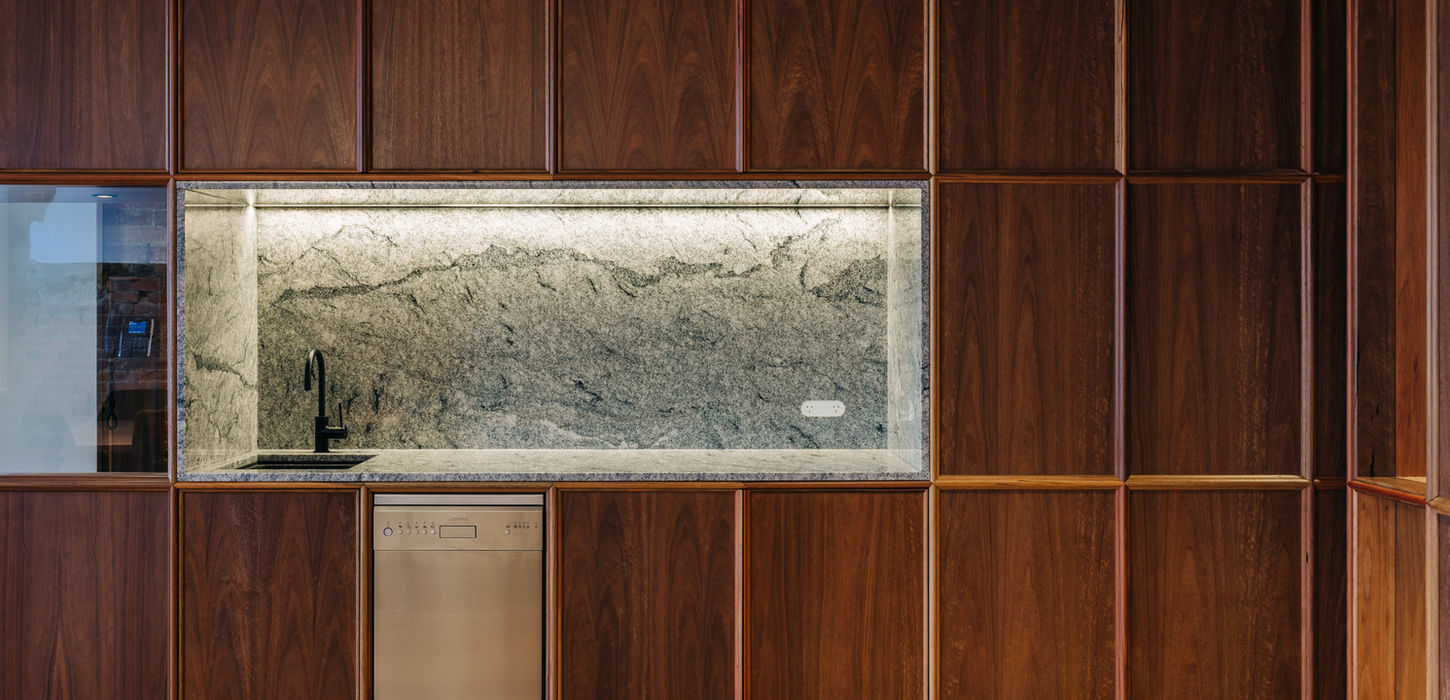A new interior balances history and contemporary design.
Our refurbishment and fitout of this three-storey building has reshaped a Georgian-era warehouse into a modern multipurpose space for both public and staff at the University of Tasmania. Rather than obscure or confuse the history of the Hobart building, our design makes an honest distinction between old and new.
CLIENT
University of Tasmania
IMAGES
Adam Gibson
LAND OF
muwinina
COLLABORATORS
Praxis Environment
Bluestar
C&C
FVS Mechanical
FVS Construction
pitt&sherry
Focused Fire Engineering
Acoustic Works
AWARDS

To make the modern elements feel obviously new, we exposed and framed remnants of history like patches of traditional plasterwork or ceiling rafters. In the meeting room, the raw brickwork and historic sprinkler system contrasts with contemporary lighting, acoustic panelling and joinery. Elsewhere, we framed heritage windows with traditional mouldings, while new windows gained crisp, clean reveals.
Defining the new.
Modern classics.
Georgian rooms tend to be very simple, without any fuss or ornament. When a space is this clean cut, anything like furniture becomes a feature in itself. To reference this history, we chose contemporary furniture that suited being elevated in the space.
Stained Tasmanian timber joinery is a contemporary interpretation of the original Georgian features, and has a certain gravitas when juxtaposed with the rest of our material palette. Its consistency subtly connects the warehouse’s three separate floors, the public foyer, and private meeting rooms.
The 1800s warehouse had been altered several times since it was first constructed, often in ways that neglected the building’s historical values. We restored this connection by retaining and exposing what was left of the original building, and repairing and patching fabric that was in poor condition. The stripped back heritage space created a backdrop for new architectural elements.
Heritage Meets Modern Architecture.






